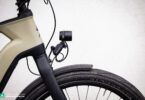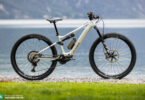How much should you budget for a good eMTB? With our high-end eMTB group test done, it was time we put 8 of 2019’s hottest, affordable eMTBs to the test. We’ll tell you what to keep in mind when you’re shopping for a new eMTB on a budget, and what compromises will you have to accept.
Which budget eMTB offers the best value for money and the most fun on the trail? To answer this question, we tested 8 bikes priced between € 3,999 and € 4,599. The direct-to-consumer brands RADON and COMMENCAL had the most affordable bikes in the test field with the SWOOP HYBRID 10.0 and the META POWER 27 RIDE respectively. For the MERIDA eONE-SIXTY 800 and the Specialized Kenevo Comp, we had to increase our initial budget from € 4,500 to € 4,600. On average, the bikes of the group test cost € 4,361.50. There were big differences in weight too. At exactly 22 kg, the CONWAY eWME 629 is almost 3.5 kg lighter than the Haibike XDURO AllMtn 3.0.
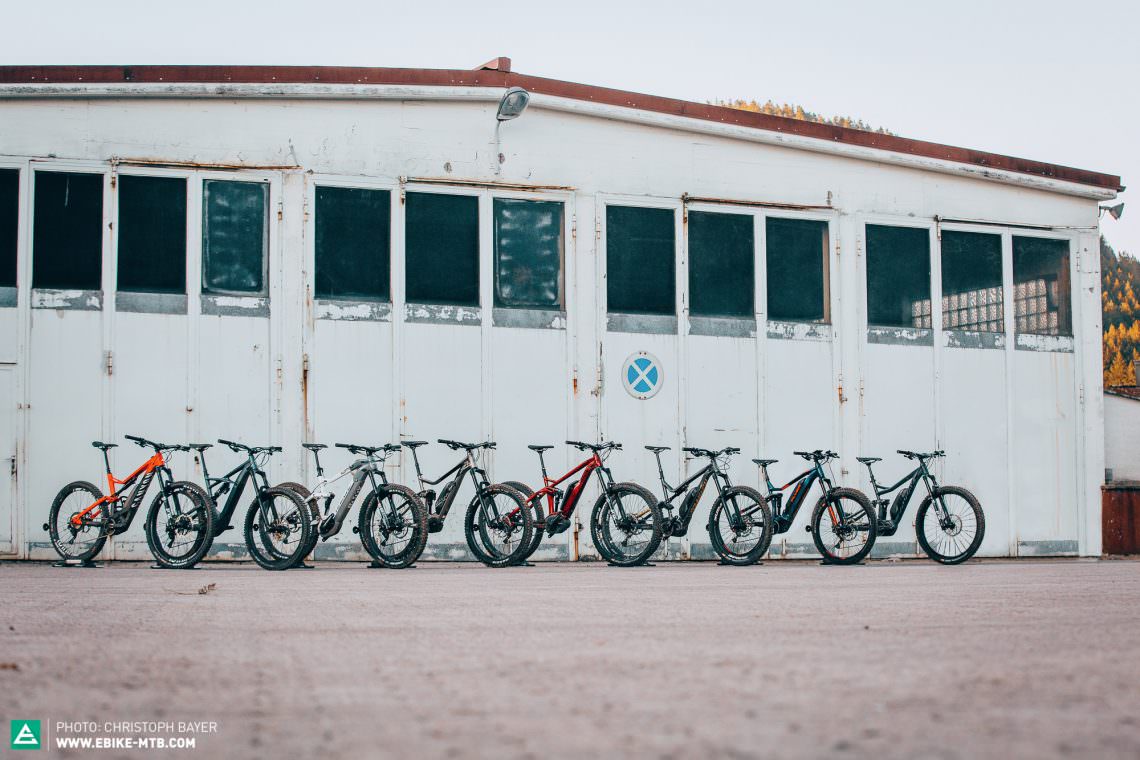
The test field
| Bike | Price | Weight | Travel (f/r) | Perm. total weight* |
|---|---|---|---|---|
| Canyon Spectral:ON 7.0 | € 4,299 | 22.38 kg | 150/150 mm | 130 kg (107 kg) |
| COMMENCAL META POWER 27 RIDE | € 4,299 | 22.63 kg | 160/150 mm | 143 kg (120 kg) |
| CONWAY eWME 629 | € 4,499 | 22.00 kg | 140/140 mm | 130 kg (108 kg) |
| FLYER Uproc7 4.10 | € 4,299 | 24.32 kg | 160/160 mm | 130 kg (105 kg) |
| Haibike XDURO AllMtn 3.0 | € 4,399 | 25.43 kg | 160/150 mm | 120 kg (94 kg) |
| MERIDA eONE-SIXTY 800 | € 4,599 | 22.10 kg | 160/160 mm | 140 kg (117 kg) |
| RADON SWOOP HYBRID 9.0 | € 3,999 | 23.10 kg | 170/170 mm | 115 kg (91 kg) |
| Specialized Turbo Kenevo Comp | € 4,599 | 23.40 kg | 180/180 mm | 136 kg (112 kg) |
*in brackets: max. payload (rider + equipment, rounded down)
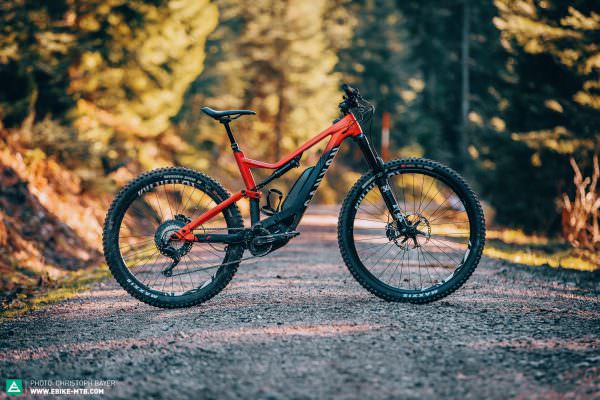
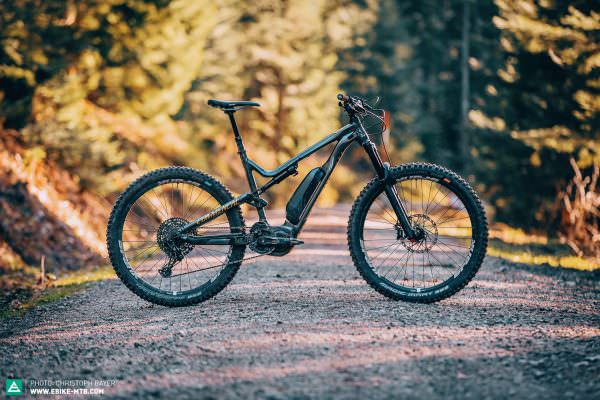


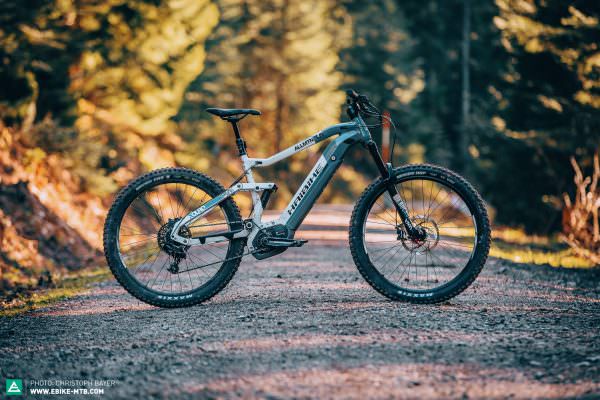

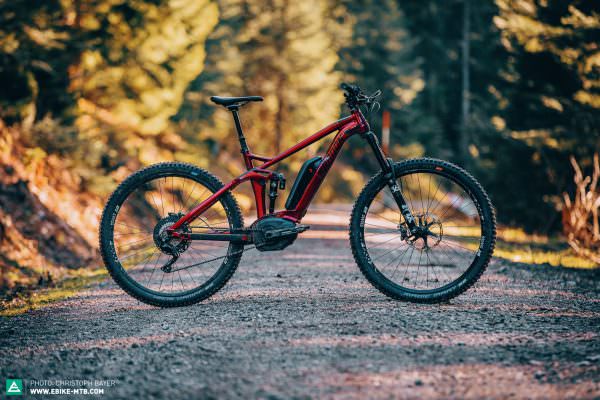
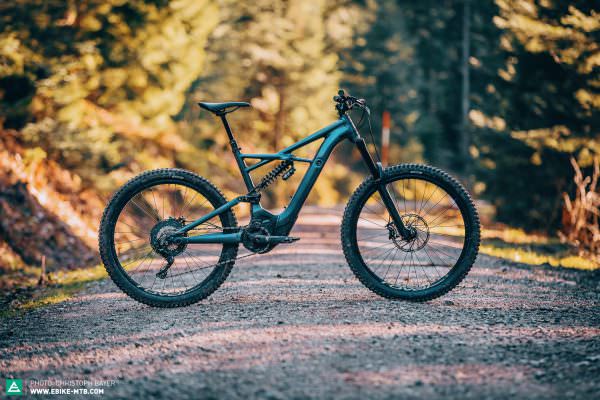
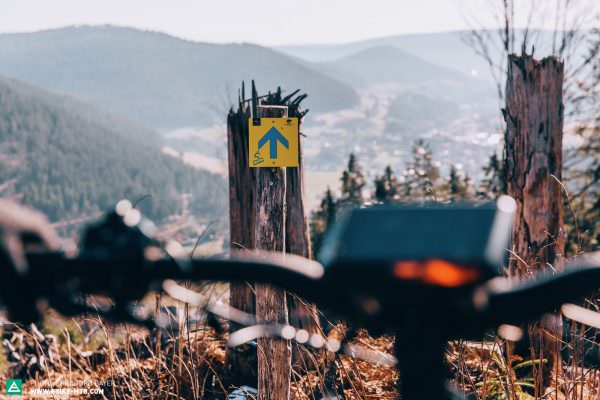

What about CUBE, YT and the new Levo?
We would have liked to include the CUBE STEREO HYBRID 140 in the test field. Unfortunately, CUBE declined our invitation to take part in the group test. We’ve already reviewed the new YT DECOY in southern France. Our test bike was one of the last pre-production bikes and YT couldn’t provide us with a production model in time. What a pity! And with the Specialized Levo, the flagship model of which was crowned Best in Test in our high-end group test, there wasn’t an entry-level model available either. Maybe that was a blessing in disguise, because instead of getting the Levo without a dropper post we had the Specialized Kenevo Comp join the test field!
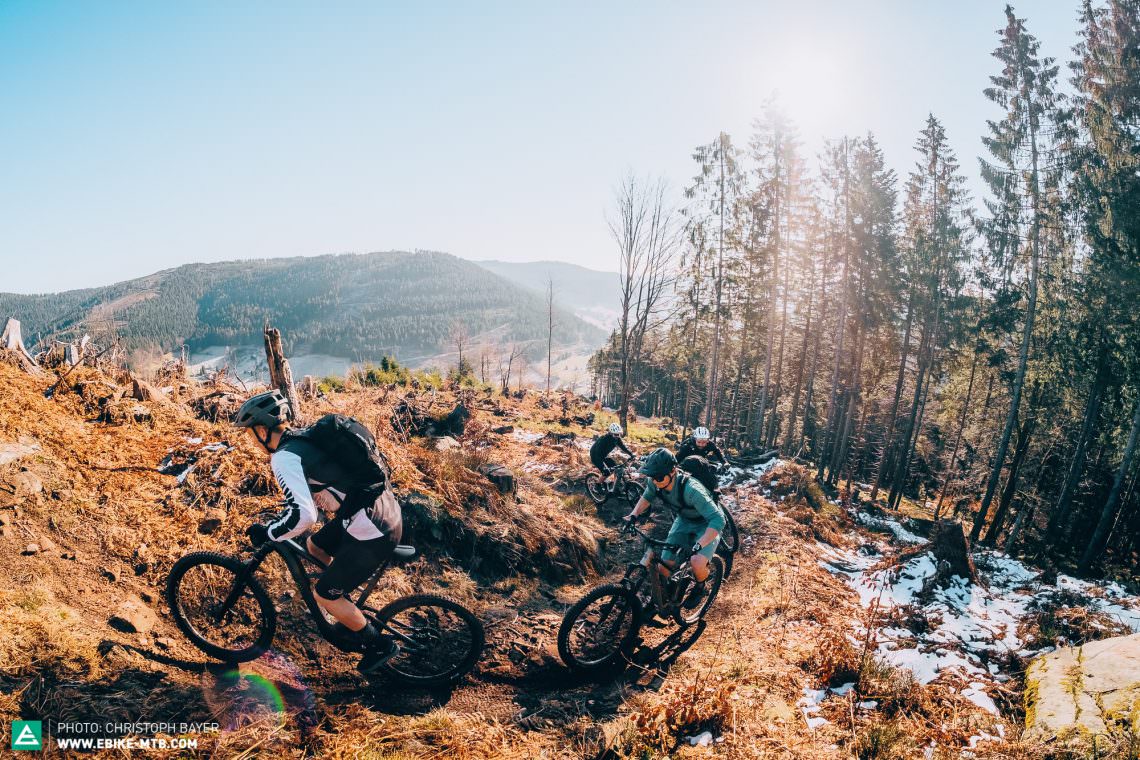
If the motor is good, it’s all good, right?
Bosch, Shimano, Panasonic and Brose – except for FLYER and Specialized, all manufacturers in this price rangerely on the Bosch Performance Line CX or the Shimano STEPS E-8000 Motor. In both cases, the bike manufacturers get a complete motor including the battery, wiring harness, and software from a single source, thus saving themselves effort and cost. In addition to the STEPS E8000, Shimano has recently released the somewhat weaker but much more affordable STEPS E7000. Except for the remote and display, bike manufacturers rarely spec the E7000 series, which is unfortunate. As our motor group test has shown, the Shimano STEPS E7000 has a lot of potential and is much easier on your wallet!

On the trail, the motors have their own character, but they’re all equally fun and plenty powerful. The dimensions and the integration of the motor, however, have a big influence on the bikes’ performance as they have a considerable effect on the geometry, rear suspension kinematics and handling of the bike. The Bosch Performance CX is by far the bulkiest motor, which significantly compromises both the Haibike and the RADON.


Battery capacity ≠ range
The largest capacity battery in the test field has 37% more capacity compared to the battery with the least capacity. The FLYER Uproc features a 630 Wh battery, while the Specialized Kenevo has to make do with 460 Wh. However, that doesn’t mean the range of the FLYER is 37% longer, because the range depends on many more factors: motor efficiency, gear selection, support mode, pedalling cadence, temperature, tires and tire pressure, terrain, rider weight, riding style, suspension efficiency… Of course, with identical conditions and the same motor, a “bigger” battery will get you further. But that’s unlikely to happen on the trail. To our surprise, we achieved a similar range with the Specialized Kenevo as with the competition running the 500 Wh Shimano system, despite its long travel suspension, wide tires and “small” battery pack.

What compromises do you have to accept in this price range?
There has never been a better time to buy an eMTB: sorted geometry, great motors and a reasonable weight. None of the bikes in the test field had any serious flaws. Nevertheless, you have to know what to look out for in this highly competitive price segment. Where is it sensible to save money and where not? Suspension, tires, brakes and cockpit are crucial, safety-relevant components on which we are not or hardly willing to compromise. Unfortunately, the brakes in this test field gave us lots of cause for criticism: Haibike, MERIDA and FLYER would have done better to save elsewhere. Another unfortunate, but by no means safety-relevant occurrence is the combination of the excellent XT derailleur with the low-end SLX shifter on both the MERIDA and the Specialized. The reverse combination would be less impressive on the shop floor, but the performance on the trail would be better, making the shifting much more crisp. As we said, you have to pay careful attention to the details.
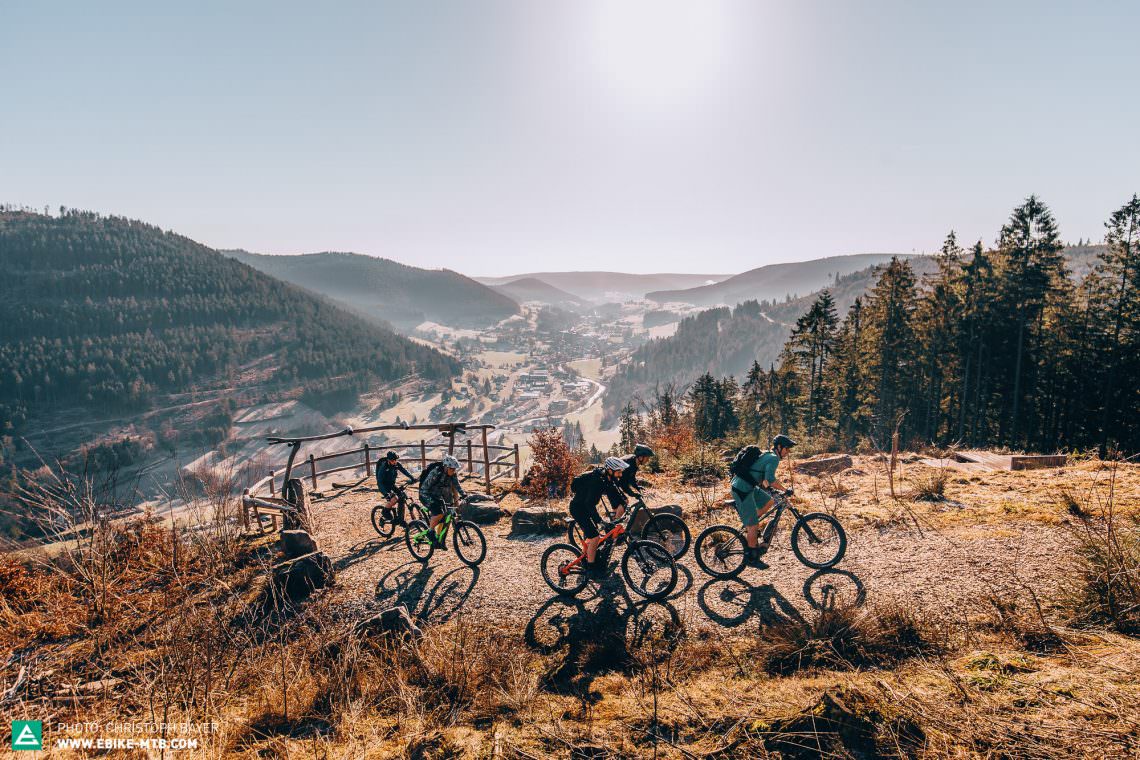
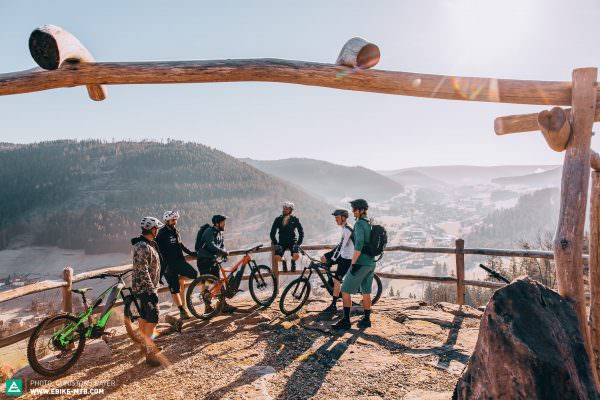

The distribution of weight is more important than the total weight
At a total weight over 22 kg, weight differences of a few hundred grams are negligible. You’ll definitely notice a few kilograms more or less when taking the bicycle of your rack. On the trail, however, the distribution of the weight is much more important. And we’re not just talking about the bike’s centre of gravity. High-quality suspension, reliable brakes with large rotors and durable, grippy tires very quickly add up on the scale. But that doesn’t matter, as they exponentially increase the amount of fun and confidence you’ll have on the trail.
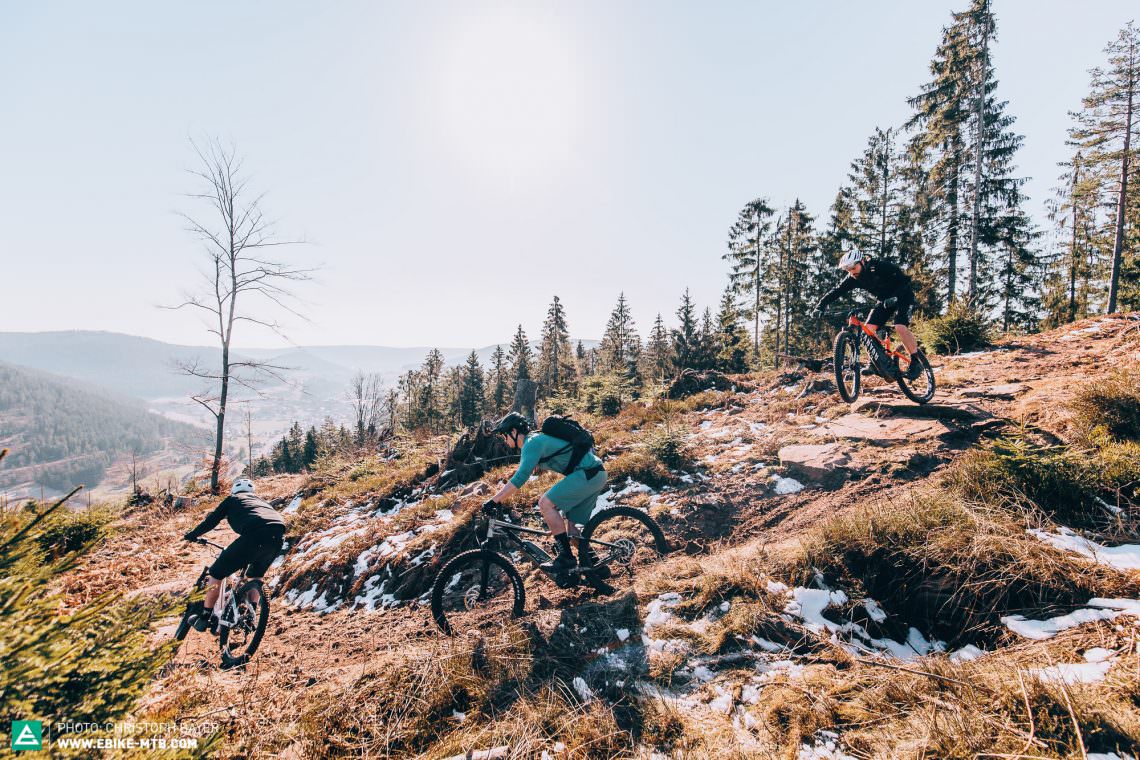
Question of preference
Besides the characteristics of the motor, the remote units on the cockpit vary depending on the manufacturer. Ranging from the super minimalist cockpit of the Specialized Kenevo, which doesn’t even have a display, to the huge D1 control centre (optional upgrade) on the FLYER Uproc. The huge display and the remote with its numerous buttons even have a navigation feature, but, mounted over the stem, they’re very likely to get damaged if you crash. We particularly liked the cockpits of the Canyon Spectral:ON and the CONWAY eWME 629, which combine the Shimano STEPS E-8000 motor with the STEPS E-7000 display and remote. The lower-priced remote is comfortable to operate and, in comparison to the bulky E-8000 remote, doesn’t get in the way of the dropper post lever.
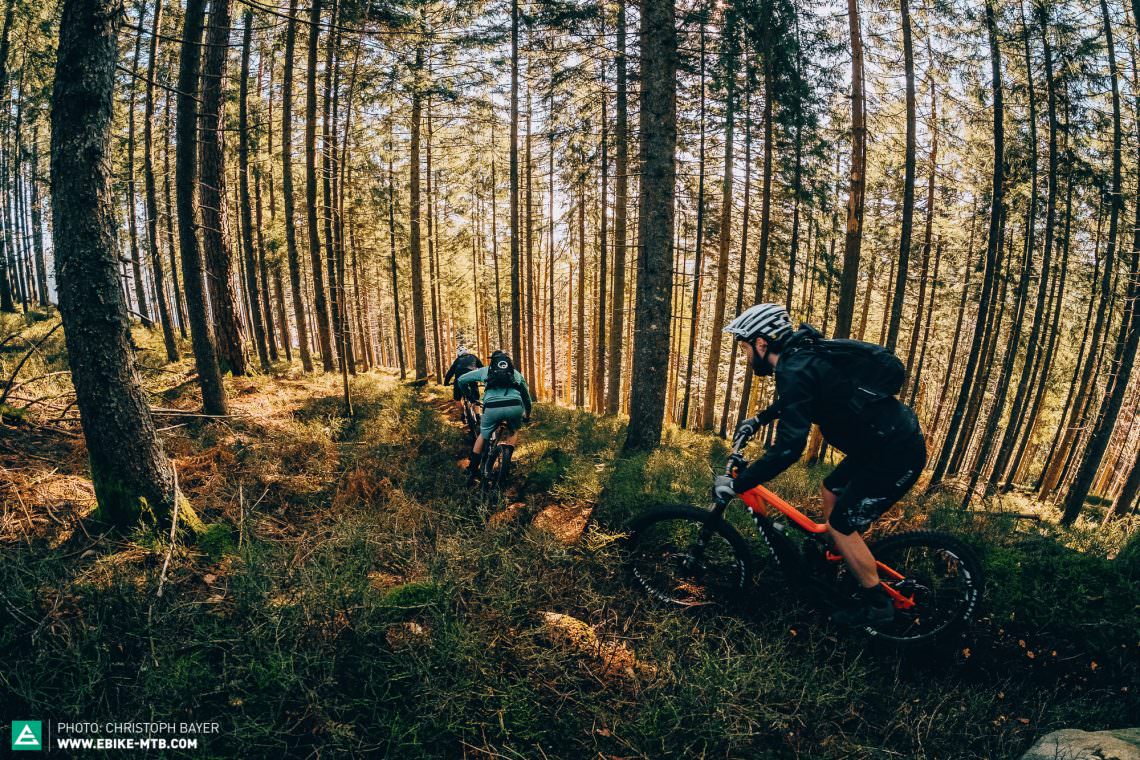

It’s not always the chain causing a racket
Bike and motor manufacturers try to reduce the noise level of the motor as much as possible. Not that we would have noticed this anyway since almost all of the batteries on the Shimano equipped bikes and on the FLYER rattled loudly. This is particularly annoying with the bikes from direct-to-consumer brands where you can’t go back to the dealer to have it fixed. We found that the batteries easily develop play because the lower and upper battery mounts are too far apart, and the battery then rattles against the frame. If you know how to adjust a drivetrain, you shouldn’t have any problems adjusting the battery mounts either: with Shimano, for example, the mount can be adjusted a few millimetres up or down thanks to the oblong holes. The aim is to adjust the battery mount so that the battery sits tight, but it shouldn’t take much effort to remove the battery either.
How and where did we test the bikes??
Racers, engineers, connoisseurs, trail hunters, alpine adventurers, eMTB novices… The list of test riders is long and varied. Our experienced test crew subjected the eMTBs in this test field to several weeks of muddy trails around Stuttgart. On top of that, the bikes also had to prove their worth as daily commuters. Finally, we put them head to head for several days on the challenging trails of the Black Forest as well as the mountain bike and gourmet paradise of Baiersbronn. The bikes had to endure relaxed gravel rides with the riders distracted by the panorama as well as much more demanding rides down trails littered with roots, rocks, ledges, jumps and steep turns followed by battery-draining climbs back to the top. Another test was the sheer weight of the riders when they got back on the bikes after having their lunch breaks at the gourmet restaurants in Baiersbronn. As you can imagine, we had absolutely no fun testing!
The test crew
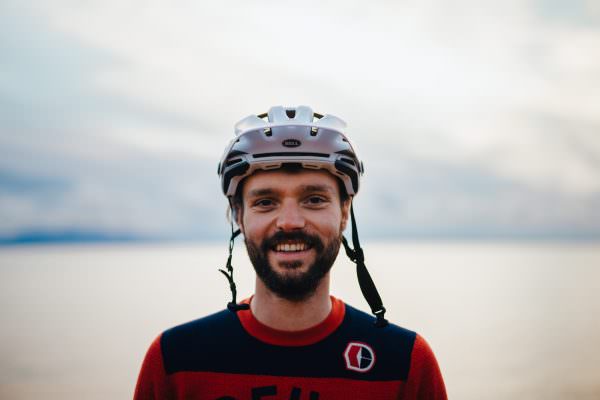
“To me, good value for money doesn’t mean the best possible components at a reasonable price, it means getting the best possible riding performance with sensible componentry at a reasonable price. How will high-end components help if the overall concept doesn’t work?”

“My home-trails in the Alps are damn steep, and unfortunately, the climbs are too. The perfect bike should give me the confidence to take on the steepest trails, and it should get me back up to the top with a balanced pedalling position and a steep seat tube angle to keep the front wheel planted.”

“Customisation is everything! I think it’s great when you can adapt the support modes to suit the terrain and your riding style, or if you can opt to the leave the display at home on your after work ride.”
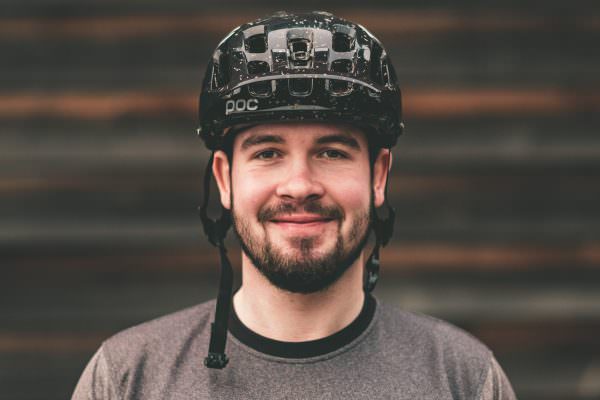
“My route to the office includes Stuttgart’s steepest road. On an eMTB, I usually commute with it in the highest support mode and on the way back home I take as many trail-shortcuts as I can. I’m reluctant to carry my bike up to the fifth floor. So the battery has to last both ways.”

“As a pensioner, I have nothing to prove. Jumps and daring manoeuvres aren’t my cup of tea – I would like to go on long rides without having to visit the chiropractor afterwards. Comfort and range take priority.”

“The eMTB is my personal bike park to go. I love jumps, berms and roots. So the bike has to have potent suspension with lots of reserves.”
As you can imagine, we had absolutely no fun testing


Our gourmet recommendations in Baiersbronn for a Black Forest cake or a healthy lunch break while out on the bike: Blockhütte Traube Tonbach, Wanderhütte Sattelei


Which bike is the best?
For this group test, we looked for an eMTB in the price range of around € 4,500 with the best performance, versatility and good value for money.
We know that eMTBs are very versatile and that the same bike gets used by different riders in very different ways. Nonetheless, there are some common denominators that apply to all riders. The most important criteria here are the weight distribution (balance), the handling, the geometry as well as the performance of the componentry, suspension and motor. It’s a misconception that a bike which is extremely fun on the trails and instils you with confidence automatically won’t do as a commuter or be suitable for long rides. Most of the bikes that perform well on the trail offer the most stable and composed handling. Everyone benefits from that – from beginners to experts.
More speed equals more fun: with a good eMTB, you can hit the trails as fast as you like without feeling overwhelmed or at the limit. It exudes confidence and composure despite being highly agile. The COMMENCAL META POWER 27 RIDE has managed to get this balance just right. Beginners will appreciate the ease with which the META POWER is able to wind through the trees, while experts will benefit from the bike’s composure, allowing them to let go of the brakes and just go. The COMMENCAL META POWER 27 RIDE is also one of the best climbers in the test field. The componentry of the almost € 4,000 bike leaves little to be desired. Thus, the COMMENCAL META POWER 27 RIDE secures the Best Value Tip.

The Specialized Kenevo proves that travel is no longer useful in categorising bikes. Despite its 180 mm travel, it feels right at home on trails beyond the bike park. The coil shock, the riding position and the very natural ride feel of the Brose motor offer unrivalled comfort on long rides. Beginners and experts alike will benefit from balanced, confidence inspiring handling, while adrenalin junkies won’t have to back down with the Kenevo when taking on the toughest tracks. Riding up technical trails isn’t a problem either. The Specialized Turbo Kenevo Comp is a huge amount of fun in every situation, thus crowned Best in Test.

All bikes in test: Canyon Spectral:ON 7.0 | COMMENCAL META POWER 27 RIDE | CONWAY eWME 629 | FLYER Uproc7 4.10 | Haibike XDURO AllMtn 3.0 | MERIDA eONE-SIXTY 800 | RADON SWOOP HYBRID 9.0 | Specialized Turbo Kenevo Comp
This article is from E-MOUNTAINBIKE issue #017
E-MOUNTAINBIKE Magazine is published in a digital app format in both English and German. Download the app for iOS or Android to read all articles on your tablet or smartphone. 100% free!

Did you enjoy this article? If so, we would be stoked if you decide to support us with a monthly contribution. By becoming a supporter of E-MOUNTAINBIKE, you will help secure a sustainable future for high-quality cycling journalism. Click here to learn more.
Words: Photos: Christoph Bayer, Valentin Rühl






